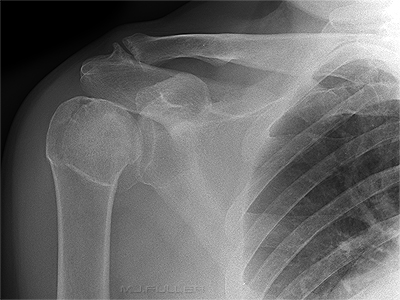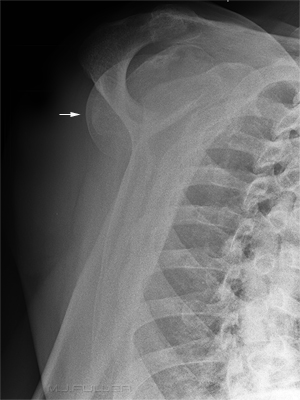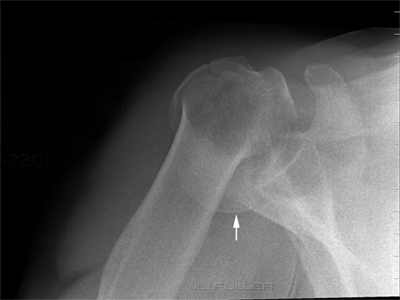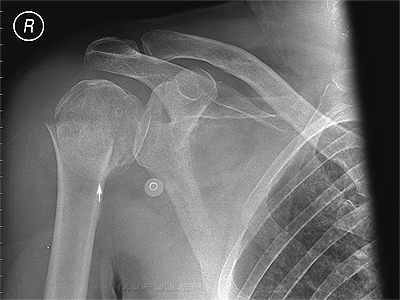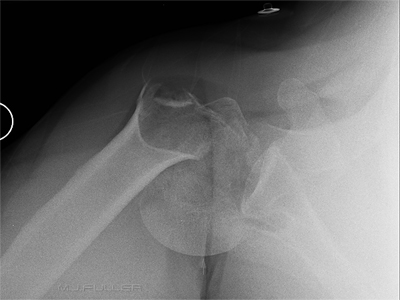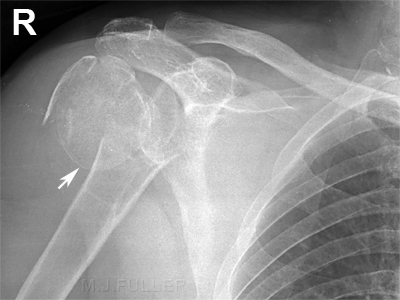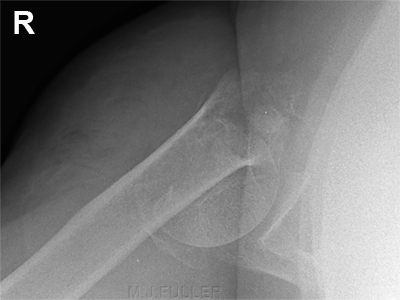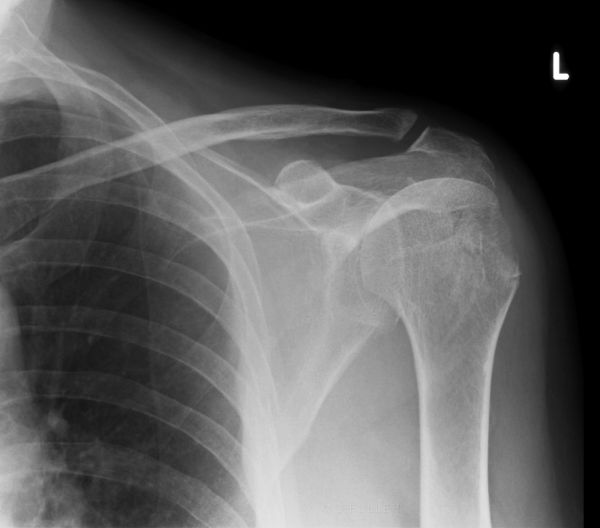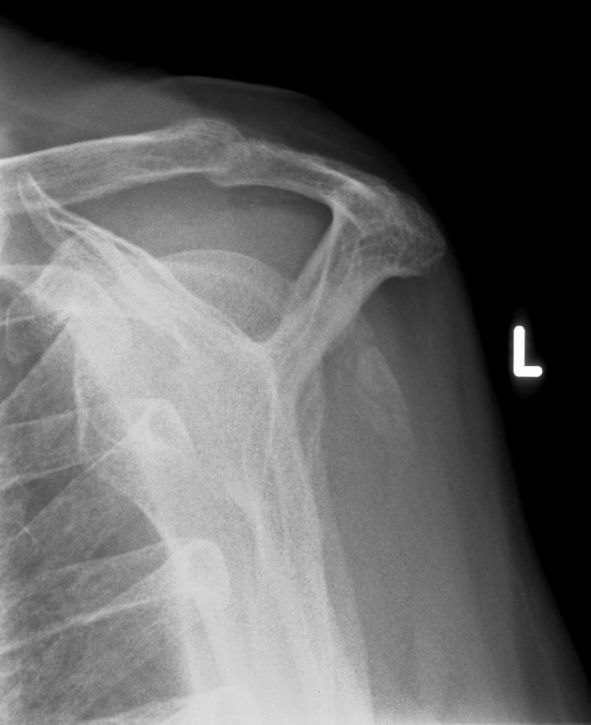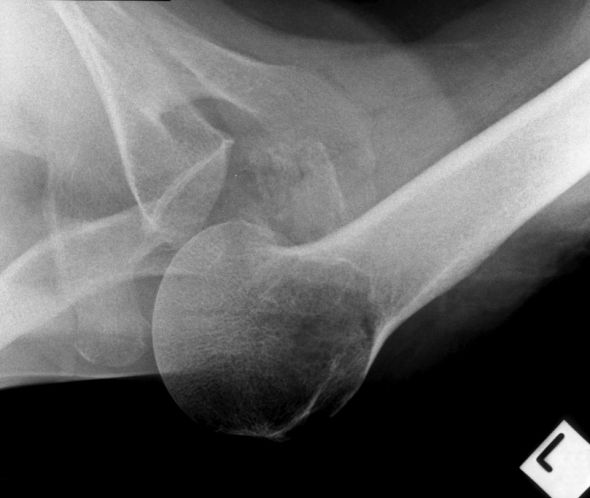Shoulder- SI vs Lateral Scapula
Some imaging departments have adopted the lateral scapula view as a routine projection for shoulder trauma radiography. Other institutions strictly forbid the lateral scapula view for shoulder trauma radiography. This page examines three cases which are arguably instructive in this debate.
Case 3. Shoulder Fracture Dislocation?
Case 4
Radiography
It is common to experience difficulty with the IS view in bedbound patients with shoulder fractures. The patients are reluctant to move and the patient's neck sometimes limits medial positioning of the cassette. It can be useful to employ a very long ffd ie instead of placing the X-ray tube beside the patient's torso, increase the ffd such that it is more inferior than the patient's feet (approximately 180cm ffd). Another positioning trick is to place the cassette above the patient's head. Irrespective of the approach that you use, innovation may be required and the image may not be aesthetically pleasing. The lack of image aesthetics should not mitigate against utilising this view (function before form).
Discussion
Relevant WikiRadiography LinksIt might appear by the choice of cases that I have taken a clear position in favour of the IS view over the lateral scapula projection. This is not the case. Both of these cases were drawn from a hospital that does not require the IS/SI view as a routine view in trauma radiography of the shoulder. The routine views adopted by this institution are AP shoulder and lateral scapula. In the first two cases, the radiographer identified the case as a potential fracture-dislocation from the AP and lateral scapula images and performed the SI view to prove the suspicion.
You could safely argue that the institutions that have adopted the IS/SI view as routine in shoulder trauma radiography have taken a safer position. It could also be argued that the institutions that require routine AP shoulder and lateral scapula views, and that have a comprehensive radiography continuing education program, will allow the radiographers to exercise judgment in these types of cases and perform supplementary views as required.
(please contribute your opinion/experiences using the start a new thread link at the bottom of this page)
